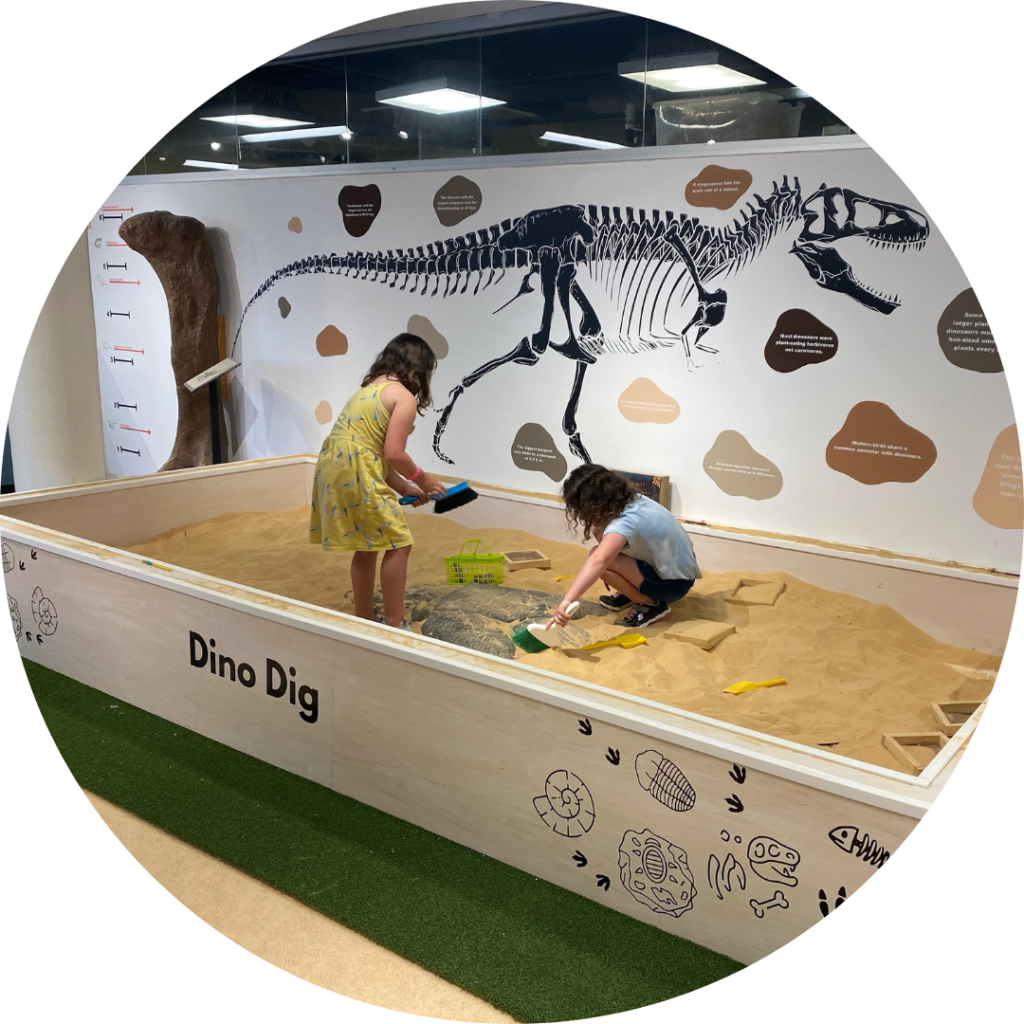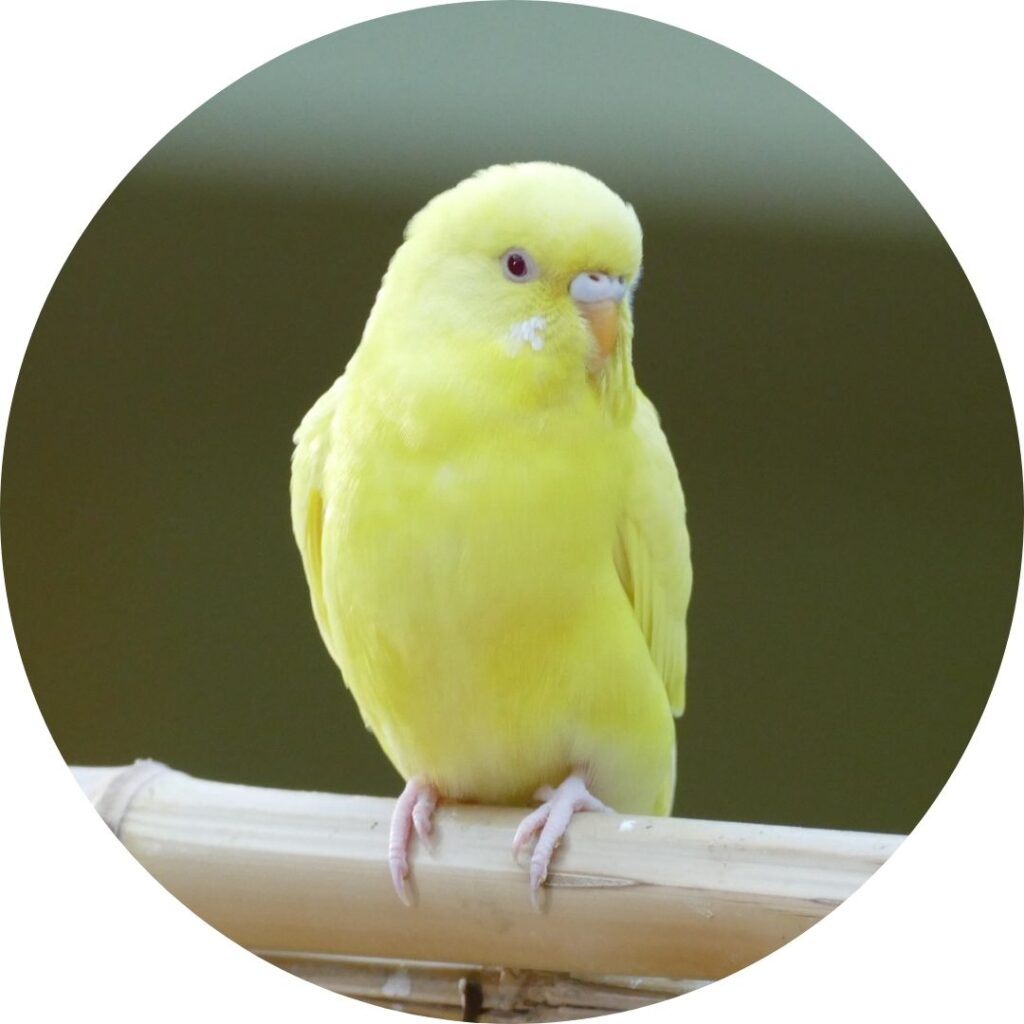Explore our exhibits
DINO DIG

This exhibit encourages your child to bring out their inner paleontologist by climbing in, digging for fossils and discovering dinosaurs for themselves. It allows children to enjoy all the thrills about learning about dinosaurs without the danger!
- Children can become paleontologists & excavate the hidden fossils.
- Measure your height and compare it to the dinosaurs of the past.
- There are featured fun facts to educate your future paleontologist.
ONE OF THE BIGGEST DINOSAURS WAS THE ARGENTINOSAURUS.
Although it is only known from fragmentary remains, Argentinosaurus is one of the largest known land animals of all time, perhaps the largest, reaching 98–115 ft in length and 66–83 tons in body mass.
Fungi Kingdom

Fungi make up a most unique sector of our planet’s ecosystem. Neither plants nor animals, fungi make up a completely new taxonomic kingdom. What is even more fascinating is their many uses within medicine, healthcare, cooking and many more! This new exhibit will dive in to the world of fungi and highlight some of the more unusual species found on our planet.
- Interactive touch-pad with a huge variety of species to explore
- Real fungi specimens on display
A Fungus Is the Largest Living Organism on the Planet
A fungus known as the honey mushroom is the largest living organism on the planet. It is believed to be about 2400 years old and covers over 2000 acres.
The Eye Planetarium

OPENING ON VALENTINES DAY 2024!!
The Eye is a science, technology, engineering, art and mathematics (STEAM) teaching tool that serves as an exhibit, theater, planetarium, performance space and classroom. Its a portal between our community and the world with the ability to fully immerse the user to interact with the world around them.
- The Eye features a selection of carefully curated content in astronomy, art, film, and various other topics
- The Eye is capable of seating 100 guests per showing. Private showings are available by request for an additional fee.
- Learn about space, animals, our planet, and various other STEAM topics in a awe inspiring interactive environment.
- Cutting edge projection and sound makes The Eye a truly unique experience!
You can build your own video game to play on our dome!
Living Collections

The Living River Exhibit represents the relationship between large bodies of water and tiny streams, demonstrating how they are connected. Get up close to remarkable creatures from the museum’s Living Collection. This exhibit links with the Healthy Earth exhibit by showing visitors the incredible resources the planet has to offer.
- Discover a new way for plants to grow with the use of fish at the Aquaponics Cabinet
- Explore fascinating insects, reptiles and fish in tanks and the impressive Living River tank
- Get a hands-on experience with prehistoric creatures at a visitor favorite: the Touch Tank
The name ‘tarantula’ was originally given to a spider living in Southern Italy from the town of Taranto, where legend claims that a small species of spider living there had a fatal bite. The only cure was for the victim to dance until exhausted, by which time the poison would have been sweated from the system.
Tides Out

Get up close and personal with some fascinating creatures that once lived in the Earth’s Oceans. Enjoy a unique opportunity to touch fossils and shells that tell the story of an active world.
- Hunt for aquatic fossils and shells
- See what Sea Stars look like from underneath and how their feet help them to move
- The tank is decorated with rocks and plants that are similar to ocean, allowing for a more realistic experience
Most of us probably owe our lives to horseshoe crabs. Their blue, copper-based blood contains lysate, which reacts to bacterial toxins by clotting. Horseshoe crab blood has long been harvested to test everything from water to intravenous drugs for contamination.
AR Sandbox

Our planet is immense, diverse and powerful. It has changed and adapted to natural and man-made effects over millions of years, and deep within its layers lies the secrets of our history. This exhibit explores geology, weather changes and our amazing Earth.
- Interactive sandbox topographic map
The Earth’s rotation is gradually slowing.
This deceleration is happening almost imperceptibly, at approximately 17 milliseconds per hundred years. This has the effect of lengthening our days, but it happens so slowly that it could be as much as 140 million years before the length of a day will have increased to 25 hours.
Wonder Lab

Wonder Lab introduces visitors of all ages into the world of coding and programming. This open learning environment uses playful elements to teach users the basics, as well as interactive stations to test out their knowledge and increase their confidence in coding. Be sure to check out the featured art installation, Racing Electrons, by Jacob R. Smith!
- Design the course for our playful Code-a-pillar and enjoy the lights and sounds of this interactive station
- Cubetto allows older children to plan and execute the path for this robot through a mountain maze
- Guests program their own interactive stories, games and animations at the Scratch workbench
- Easily a favorite station, Dot-and-Dash robots can be programmed to do a large variety of movements and activities using the control tablets
It’s never too early to learn about coding!
Steve Jobs and Steve Wozniak, co-founders of Apple, began their coding careers as teenagers.
the parakeet Garden

The Parakeet Garden is an immersive parakeet exhibit. Guests will enter our garden and be able to feed and closely interact with 150 parakeets!
Did you know we also have two macaws adjacent to the Parakeet Garden? The macaws love visitors–stop by their enclosure to say hello, dance with Jester, and observe their interactions.
- The Parakeet Garden is located on the 5th floor of Center In The Square.
- It was previously named the Hidden Garden.
- Guests will have a guided tour of the garden, interact and hand feed the parakeets.
- This experience is fun for all ages!
Budgies, like the rest of the parrot family, are highly intelligent birds. They are also extremely vocal and are capable of learning quite a few words. Did you know that these little birds have enough brains to cope with basic mathematics? They are capable of counting up to three and they are not easily tricked.
The Cove

Introducing our newest exhibit, The Cove! Enter this immersive underwater environment for up-close encounters with our aquatic neighbors. Featuring immersive projection visuals, soundscapes, and hands-on introductions to marine life.
- The Cove offers two touch tanks, able to be explored hands-on with facilitation by our Living Collections and Education experts.
- With calming oceanic soundscapes and light music, this space will make you feel right at home–under the sea, that is.
- Immersive visuals bring the water to you!
The Cove had its soft launch in January 2025. Stop in to meet our current friends, and keep an eye out for new ones!
How It Works

Explore the world of engineering, physics and mechanics using creativity and imagination. Visitors of all ages can use the exhibits and see difference forces in motion and how they can be manipulated to your desire.
- Design, build and test different structures with larger-than-life foam blocks
- See how sound can become visible by finding just the right frequency to make water jump and dance
- How long can you make the discs in our momentum exhibit stay up?
- Use the airplane launchers to sent your paper airplane soaring through the sky
Engineers solve practical problems by applying mathematical and scientific knowledge. The word engineer comes from a Latin word meaning ‘cleverness’.
Toy Joy

Children and adults of all ages get the most benefit from play! This exhibit features larger-than-life toys and games for visitors to enjoy to their heart’s content whilst still learning about forces and engineering.
- What will you build with our huge Lego-style blocks?
- Light Bright encourages imagination and creativity whilst showing the science behind fluorescent lighting
- See your motion reflected in the mesmerizing Aurora Vortex
- Play with our retro arcade machines with no need for quarters
One of the exhibits, Mirror Minecraft, in this section was designed and created by Virginia Tech researchers!
The Bubble

The Bubble is a multi-sensory room specifically designed to enhance the growth and development of Pre-K aged children and those who benefit from sensory stimulation. Children with autism spectrum disorder (ASD) may have issues effectively processing sensory information and may perceive sensation differently. The purpose of the sensory room is to provide a relaxed atmosphere where the person is surrounded by pleasant sensations especially children with autism who has sensory problems. Here’s an article from Autism Parenting Magazine that discusses this thoroughly.
- Space for children to interact with their environment and manipulation of objects and light within that space
- Enclosed space to allow children to act freely within the space and choose their path
- Vast choice of toys and games to cater for each individual personality that enters the space
- Specific games and toys used in professional programs to develop the grow and development of special needs children
- Comfortable sofas for parents to enjoy watching their children explore the enclosed space
This exhibit was designed in a Snozelen style. Snoezelen Multi-Sensory Environments are relaxing spaces that help reduce agitation and anxiety, but they can also engage and delight the user, stimulate reactions and encourage communication
Magna-Tiles

The Science Museum of Western Virginia reopened in October 2024 following a month-long closure for exhibit updates, which included a large Magna-Tiles exhibit and adjacent animation studio.
Come test your engineering skills, or simply have fun with these colored tiles, cars, and structures.
- Two Magna-Tiles stations for plenty of build space, several sets of structures to build by template or make your own!
- Accompanying video component for inspiration and ideas.
Did you know that the strength and stability of the structures we build depends on the shapes we select?
With its precise and proportioned lengths of each side, the triangle is the strongest shape! When we apply force to a triangle, the pressure is distributed throughout each side.
Who knew the triangle was so resilient?
ANCIENT RUINS

The Ancient Ruins is home to the majority of our terrestrial animals. You will see animals from a variety of habitats from all over the world. This area is home to an assortment of species ranging from snakes to amphibians. Also admire a breathtaking ruin aesthetic that was forged from concrete. Become immersed in the ruin atmosphere with soothing nature sounds to top it all off.
- learn about the natural habitats that the animals call home.
- observe a variety of different animals.
- experience these animal up close.
Many animals are attracted to ruins as they usually provide shelter and constant food source. These animals consist of birds, small mammals, insects, amphibians, and reptiles. Ruins in the water, such as shipwrecks, are home to aquatic species, such as fish, and provide the similar resources as their land counterparts.
